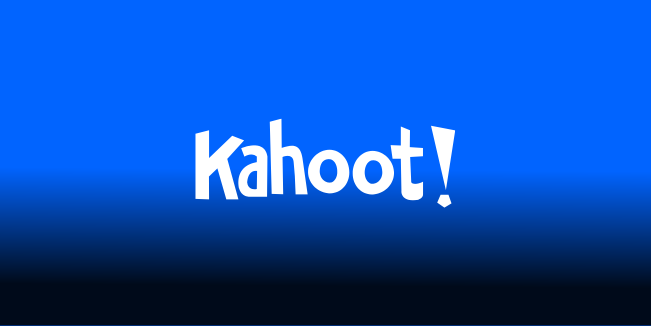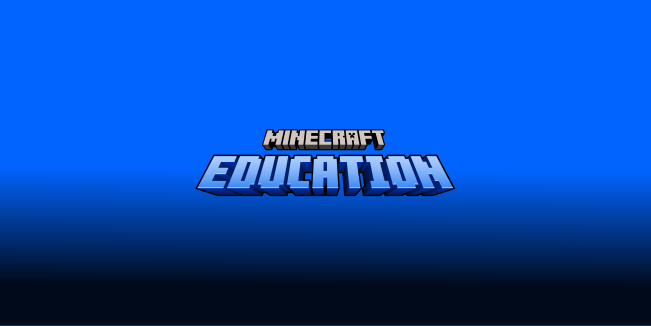edtech
gamification
education
Unlocking the Power of Gamification in Educational Technology

In an ever-changing educational landscape, one word has made considerable waves in recent years: gamification. It's more than a catchphrase; it's a transformational concept with the ability to change the way we learn and teach. This blog post will help you understand and apply the potential of gamification in educational technology.
A New Educational Model
Education has always been associated with structured classrooms, textbooks, and lectures. While these strategies have their advantages, they frequently fail to keep pupils engaged and motivated. This is where gamification can help.
What is Gamification?
At its foundation, gamification is the application of game design ideas to non-game environments, in this case education. Gamification seeks to make education not only informative but also entertaining and engaging by introducing features such as points, challenges, prizes, and competition into the classroom learning process. It changes the passive learner into an active participant in their own education.
The Rise of Educational Technology
Educational technology, sometimes known as edtech, is continuously increasing and evolving. Edtech has already revolutionized the way we access and consume educational content, from interactive e-learning platforms to mobile apps. We can now take a major step ahead in improving the educational experience by incorporating gamification into these technologies.
Why Focus on Gamification in Educational Technology?
In today's digital world, students are looking for experiences as well as information. Gamification, which allows for the creation of immersive and interactive learning experiences, fits in perfectly with this approach. Understanding gamification in educational technology is critical for staying at the forefront of this educational revolution, whether you're an instructor, a student, or a developer.
What to Expect
This blog article will dig into the world of gamification in depth. We will look at its definition, historical context, and essential concepts. We'll also go over the several advantages it has in the realm of education, with real-world examples to back it up. We'll also discuss the problems and issues that come with applying gamification, as well as practical advice and tools to get you started.
Benefits of Gamification in Educational Technology
Increased Student Participation
Increased student engagement is one of the key benefits of gamification in education. Traditional lectures and textbooks can leave students disinterested and distanced from the subject matter. Gamification, with gaming elements on the other hand, captivates students by making the learning process interactive and entertaining.
Better Learning Outcomes
Gamification has been demonstrated to improve learning results. Students are more likely to comprehend and remember material when they are engaged and motivated. Educators can build an a learning environment that fosters active learning and knowledge retention by including game components such as quizzes, challenges, and simulations.
Improved Retention and Motivation
Gamification appeals to our inherent desire for competition and achievement. When students receive points, badges, or awards for their achievements, it increases their intrinsic motivation to succeed. Furthermore, the sense of accomplishment acquired from attaining milestones in a gamified educational setting promotes long-term knowledge retention.
Individualized Learning Experiences
Every student is different, with distinct learning styles and speeds. Gamification enables tailored learning experiences by providing several paths to mastery. Students can work at their own pace and discover content that is tailored to their own needs and interests.
Gamification Elements in Educational Technology
It's critical to include the correct aspects adding game elements in order to create a fully gamified educational experience. Here are some major components that are frequently employed in gamification:
Leaderboards, Badges, and Points
Points and badges are awarded for successfully completing tasks or attaining milestones each school year. Leaderboards provide ranks, which encourages healthy rivalry among students.
Storytelling and Narrative
Narratives and storytelling approaches can transform educational content into fun journeys that immerse and engage students in the learning process.
Quests and Challenges
Challenges and objectives make learning more exciting. They motivate students and kids to tackle difficulties and attain specified objectives.
Monitoring and Feedback on Progress
Students gain from frequent performance feedback. Progress tracking and feedback tools assist learners in identifying their strengths and areas for improvement.
Interactions and Collaboration with Others
Gamification frequently involves social components, such as peer collaboration or competition. This promotes a sense of community and teamwork.
Successful Case Studies
Let's look at a few successful case studies to demonstrate the efficiency of gamification in educational technology:
Duolingo

This language-learning software employs gamification to make learning a new language fun and addictive. As they progress, users gain points and unlock new levels, keeping them motivated to practice on a regular basis.
The Gamified Experience: When you log into Duolingo, you enter a world where learning a new language feels more like an enjoyable game than a challenging endeavor. The platform incorporates a range of gamification elements, including points, games, levels, streaks, and virtual rewards like lingots. Users earn points for completing lessons, maintain streaks for consecutive days of practice, and can unlock new levels as they progress. This gaming-inspired approach creates a sense of achievement and competition, keeping learners motivated to return and practice consistently.
Gamification Benefits: Duolingo's approach to gamification has had profound effects on language learning. It has effectively addressed one of the major challenges of language acquisition: maintaining motivation and consistency. Learners find themselves addicted to earning points, achieving high streaks, and competing with friends, all while building valuable language skills. As a result, Duolingo has become a go-to game based learning platform for language learners of all ages.
Kahoot!

Kahoot! is a popular quiz-based learning tool that makes learning fun. Students can compete against one another in real-time tests to improve their recall of facts and concepts.
The Gamified Experience: In Kahoot!, quizzes become thrilling competitions where students can challenge each other in real-time. Teachers can create custom quizzes or use existing ones on various subjects, from mathematics to history. Students participate by answering questions on their devices, and the platform awards points based on both correctness and speed. A live leaderboard displays the rankings, generating a sense of excitement and friendly competition among participants.
Gamification Benefits: Kahoot! is a testament to how gamification can elevate traditional educational methods. It boosts engagement levels by turning quizzes into an interactive, game based learning, that students eagerly anticipate. The competitive element motivates learners to pay close attention to the content, as they strive to outperform their peers. This not only enhances knowledge retention but also makes learning enjoyable, a critical factor in fostering a love for learning.
Minecraft Education Edition

A popular sandbox game, now includes an education edition that instructors and high school students may utilize as a learning tool. Students can investigate historical contexts or construct mathematically accurate structures, making learning a creative adventure.
The Gamified Experience: In Minecraft: Education Edition, students step into a virtual world where they can explore historical settings, construct intricate structures, and collaborate on projects. They navigate through different challenges and tasks while learning various subjects such as history, mathematics, and environmental science. The game's open-ended nature encourages problem-solving, creativity, and critical thinking.
Gamification Benefits: This adaptation of Minecraft for educational purposes demonstrates the versatility of gamification. By immersing students in a 3D world where they actively participate in lessons, it fosters a deeper understanding of complex concepts. Students find themselves absorbed in learning while crafting historical landmarks, calculating dimensions for architectural designs, and solving environmental challenges. It's a prime example of how gamification can transcend traditional boundaries to create unique and engaging educational experiences.
Challenges and Considerations
While gamification has many advantages, it is critical to be aware of the following potential drawbacks and considerations:
Potential Drawbacks - Gamification should improve rather than hinder from the learning experience. Gamification that is poorly conceived can be distracting and unhelpful.
Accessibility and Inclusivity - Gamified educational technology developers must ensure that it is accessible to all students, including those with disabilities.
Balancing Game Elements and Instructional Information - Finding the correct balance between game, game design elements, and instructional information is critical. Never, ever should the instructional side be abandoned for the sake of gamification.
Implementing Gamification in Your Educational Technology
Are you ready to include gamification into your classroom or edtech platform? Here are some preliminary steps:
-
Identify your educational goals and the precise outcomes you wish to attain through gamification.
-
Select Appropriate Game Elements: Choose game elements that correspond to your learning objectives. Consider which aspects, such as points, badges, challenges, or other elements, will be most effective.
-
Create Informative and Engaging Content: Develop instructional content that is both informative and engaging. In this aspect, storytelling and narrative structures can be especially successful.
-
Give Clear Instructions: Make sure students understand how gamification aspects work and how they connect to their learning objectives.
-
Test and Iterate: Launch your gamified instructional technology and gather user feedback.
Measuring the Effectiveness of Gamification Elements
To evaluate the impact of gamification, you must collect and analyze data in a methodical manner. Consider the following critical metrics:
Engagement Metrics: Track student involvement, task completion rates, and time spent on tasks.
Performance Metrics: Use tests, quizzes, or assignments to evaluate student performance.
Retention Metrics: Keep track of how effectively students retain content over time and whether gamification helps with long-term retention.
User Feedback: Collect qualitative data from students via surveys and feedback to better understand their experiences and preferences.
Future Trends and Innovations
As gamification continues to weave its transformative magic in the realm of educational technology, it's crucial to keep an eye on the horizon for emerging trends and innovations that are set to shape the future of learning. Here are some exciting developments to watch out for:
Virtual and Augmented Reality (VR/AR)
VR and AR technologies are poised to revolutionize the way we perceive and interact with educational content. Imagine stepping into a history lesson and finding yourself in the midst of ancient Rome, or exploring the intricacies of molecular biology in a virtual laboratory. These immersive experiences can transport students to places and scenarios that were previously inaccessible. In the context of gamification, VR and AR can amplify the sense of adventure and engagement by allowing learners to physically interact with gamified elements. For instance, they can embark on quests or solve puzzles in a fully immersive 3D environment. This technology has the potential to turn learning into an unforgettable adventure.
Artificial Intelligence (AI)
Artificial intelligence is set to play a pivotal role in the future of gamification in education. AI-powered systems can analyze student data and behavior to provide personalized recommendations and adapt the gamified content to meet the unique needs of each learner. For example, an AI-driven educational game could adjust the difficulty level of challenges based on the student's performance, ensuring that the learning experience remains challenging yet achievable. AI can also help educators by providing insights into student learning progress and suggesting interventions when learners face difficulties. This level of customization and support can significantly enhance the effectiveness of gamified learning experiences.
Blockchain Technology for Credentials
Blockchain technology, known for its security and transparency, is finding its way into the world of higher education too. It offers a solution to the challenge of verifying and maintaining digital badges and certifications obtained through gamified learning platforms. Blockchain ensures that these credentials are tamper-proof and easily accessible to both students and potential employers. As more educational institutions and employers recognize the value of digital badges and certifications earned through gamified learning experiences, blockchain technology will become an integral part of the educational landscape. This innovation not only validates the skills and knowledge gained but also opens up new avenues for career advancement and skill recognition.
Data-Driven Gamification
In the future, gamification in education will become even more data-driven. Advanced analytics tools will allow educators and developers to gain deeper insights into how learners interact with gamified content. They will be able to track not only progress and completion rates but also learner emotions and behaviors during gameplay. This data can be used to fine-tune gamification elements, identify areas where students struggle, and create more effective learning pathways. By harnessing the power of data, the gamification experience can become increasingly personalized and responsive to individual learner needs.
Gamification for Soft Skills and Social-Emotional Learning
While gamification has been primarily used for imparting academic knowledge, its future lies in nurturing soft skills and social-emotional learning (SEL). These skills, such as critical thinking, communication, and empathy, are becoming increasingly important in today's rapidly changing world. Gamified experiences can be used classroom activities designed to promote teamwork, decision-making, and emotional intelligence. This approach not only prepares students for success in the workplace but also equips them with the essential life skills needed to navigate complex social interactions and challenges.
Conclusion
Finally, gamification in educational technology provides a dynamic and revolutionary learning strategy. It engages students, improves learning results, and provides individualized experiences that meet the needs of a varied range of learners. Gamification is at the vanguard of the digital age's evolution of education, presenting unlimited options for educators, developers, and students alike.
So, whether you're a teacher hoping to make your classes more interesting, a student searching for a more dynamic learning experience, or a developer looking to create the next generation of gamified educational technology, keep this in mind: the power of gamification is at your fingertips. Accept it, experiment with it, and you will be able to unleash the possibilities for a greater future in education. Gamification is not only a game changer; it is also a game changer in education.